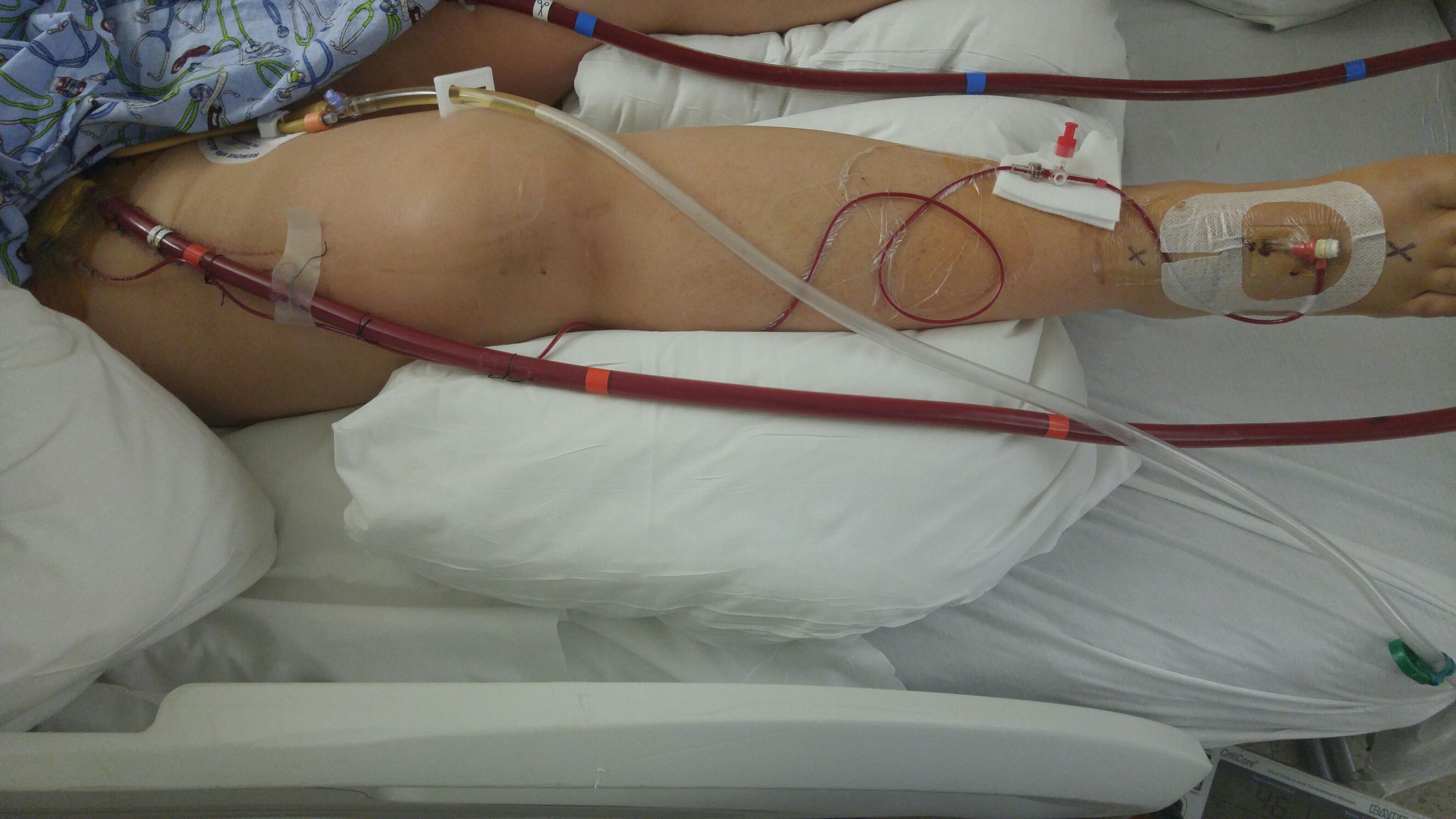Back to 2016 Karmody Posters
Comparison of Ancillary Perfusion Options for Occlusive ECMO Cannulas and a Novel Technique for Percutaneous Distal Retrograde Perfusion
Jason E. Davis, MD, Massimo Napolitano, Elie Elmann, Arthur Ng, David O'Connor.
Hackensack University Medical Center, Hackensack, NJ.
OBJECTIVES:
Extracorporeal membrane oxygenation offers potentially life-saving support for patients with severe cardiopulmonary collapse, but requires the use of large arterial and venous cannulas that can occlude even non-diseased femoral vessels. A few case reports and series have described this source of significant morbidity, but none have described the novel technique for percutaneous distal retrograde perfusion we present, nor has there been any comparison between distal retrograde perfusion versus proximal anterograde perfusion versus no ancillary extremity perfusion.
METHODS:
We performed a single-center retrospective review of all patients who underwent ECMO cannulation at a 900-bed tertiary care hospital between 3/2013 - 9/2015 and include in our review a novel technique for percutaneous retrograde distal limb perfusion also described. The primary outcome measure was post-cannulation limb ischemia. Additional variables include the patient’s age, indication for ECMO, type of ECMO (peripheral arterio-venous, central arterio-venous, or veno-venous), use and type of ancillary limb perfusion, prophylactic versus therapeutic ancillary perfusion, cutdown versus percutaneous access, 30-day mortality, and comorbidities such as PAD and diabetes mellitus.
RESULTS:
Between 3/2013 and 9/2015, 56 patients underwent ECMO cannulation, of which there were 23 femoral AV without ancillary limb perfusion (fAV-wo), 8 femoral AV with anterograde SFA perfusion (fAV-SFA), 6 femoral AV with distal retrograde perfusion (fAV-drp), 8 central AV (cAV), and 11 VV. Two of 23 patients with fAV-wo developed limb-threatening ischemia requiring reperfusion or anticipated amputation, while none with ancillary perfusion developed acute limb ischemia. Thirty-day mortality was 11 of 23 for fAV-wo, 3 of 8 for fAV-SFA, 2 of 6 for fAV-drp, 5 of 8 for cAV, and 6 of 11 for VV. Percutaneous AV access without ancillary extremity perfusion was associated with a higher rate of acute limb ischemia.
CONCLUSIONS:
Percutaneous distal retrograde perfusion of lower extremities is a safe, rapid, and limb-saving approach for lower extremity perfusion distal to occlusive ECMO cannulas that can be performed intraoperatively or at bedside and is particularly useful for young patients with smaller arteries without significant tibial disease and obese patients for whom percutaneous anterograde SFA cannulation can be more challenging. 
Back to 2016 Karmody Posters
|







